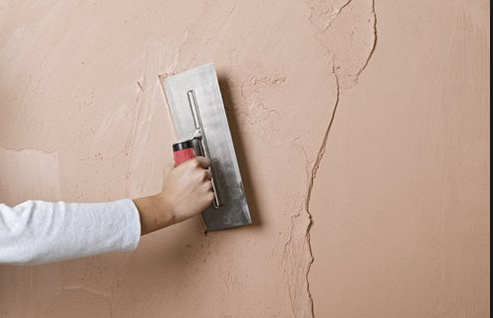A Comprehensive Overview to Learning Plastering Abilities for Your Remodelling Requirements

Vital Tools and Products
In the world of plastering, having the right devices and materials is paramount to attaining a remarkable coating. Different crucial devices offer distinct objectives, making certain performance and precision throughout the plastering process. A top quality trowel, as an example, is crucial for smoothing and applying plaster, while a hawk gives a secure platform for holding the material. A joint blade is likewise important for detailed work, specifically in sides and corners.
In enhancement to tools, picking the best plastering products is important. Gypsum-based plasters are generally liked for their flexibility and convenience of use, while cement-based choices are perfect for outside applications as a result of their toughness. Water and bonding agents play substantial functions in accomplishing correct consistency and attachment, ensuring that the plaster sticks efficiently to the surface area.
In addition, protective gear such as masks, handwear covers, and safety glasses is necessary to protect versus dust and irritation throughout the application procedure. By constructing the appropriate mix of devices and materials, plasterers can enhance their capability and create top quality surfaces, inevitably boosting the overall craftsmanship of their job.
Preparing Surface Areas for Plastering
Attaining a durable and smooth plaster finish starts with precise preparation of the surface areas to be glued. This foundational step is essential to ensuring adhesion and the longevity of the plaster. Beginning by assessing the problem of the substrate-- whether it is stonework, drywall, or concrete-- eliminating any kind of loosened paint, dust, or debris that might disrupt bonding.
Next, repair any type of flaws such as splits or holes. Make use of an appropriate filler to accomplish a degree surface; this can be important for avoiding future problems. Once fixed, guarantee the surface is dry and tidy, as moisture can jeopardize plaster adherence.
For porous surface areas, it is suggested to use a bonding agent. This product improves bond and produces a reliable user interface in between the plaster and substratum. If collaborating with previously plastered surfaces, it might be necessary to scuff or sand the area lightly to give a trick for the brand-new plaster layer.
Smudging Strategies and Tips
Understanding gluing methods requires both ability and technique to achieve a remarkable surface. One necessary technique is the application of the plaster in multiple slim layers, instead than a solitary thick coat.
When using the finish coat, utilize a troweling method that involves holding the trowel at a mild angle and operating in a circular movement. This aids to produce a smooth surface and lowers the appearance of trowel marks. Additionally, keep a content spray container of water convenient to haze the surface lightly; this keeps the plaster practical and allows for smoother finishing.
Timing is critical; work efficiently, as the plaster begins to establish. Once the plaster has firmed up however is still moist, utilize a wet sponge to gently smooth the surface additionally. Last but not least, allow adequate drying time before sanding or painting, guaranteeing your effort causes a specialist, top notch coating.
Usual Errors to Stay Clear Of

One more usual mistake is applying plaster too thickly. Overzealous applications can result in splitting and extended drying out times. It's necessary to apply plaster in thin, even layers, allowing each coat to completely dry properly before including much more.
Furthermore, not making use of the right tools can hinder the quality of the surface. Using unsuitable trowels or mixers can produce inconsistencies in the plastering process. Constantly go with high-grade devices made for smudging tasks.
Last but not least, several individuals underestimate the importance of timing. Functioning in improper temperature levels or moisture levels can adversely affect plaster treating and drying. It is advisable to check weather condition problems and adjust your timetable as necessary.
Ending Up Touches for a Professional Appearance
The last stages of a smudging job are crucial for accomplishing a polished, expert look. Once the plaster has actually dried sufficiently, the internet next action is to assess the surface area for blemishes.
After sanding, it's a good idea to clean the surface area to remove any type of dirt and debris. A moist fabric works for this function, adhered to by a complete drying period. If needed, using a thin layer of completing plaster can improve the surface area better, offering a seamless coating.
As soon as the finishing plaster is dry, an additional round of fining sand may be called for to achieve the desired smoothness. Lastly, take into consideration using a primer before painting or wallpapering, which will certainly boost adhesion and sturdiness.
Verdict
Grasping plastering skills dramatically boosts the high quality of remodelling jobs. An extensive understanding of vital tools, surface area prep work, and efficient techniques is critical for attaining expert results.
Water and bonding representatives play significant duties in achieving correct consistency and attachment, guaranteeing that i thought about this the plaster sticks properly to the surface area. Plastering.


Furthermore, maintain a spray bottle of water convenient to haze the surface gently; this keeps the plaster practical and enables for smoother ending up. (Plastering)
If required, using a thin layer of ending up plaster can improve the surface area better, giving a smooth finish.